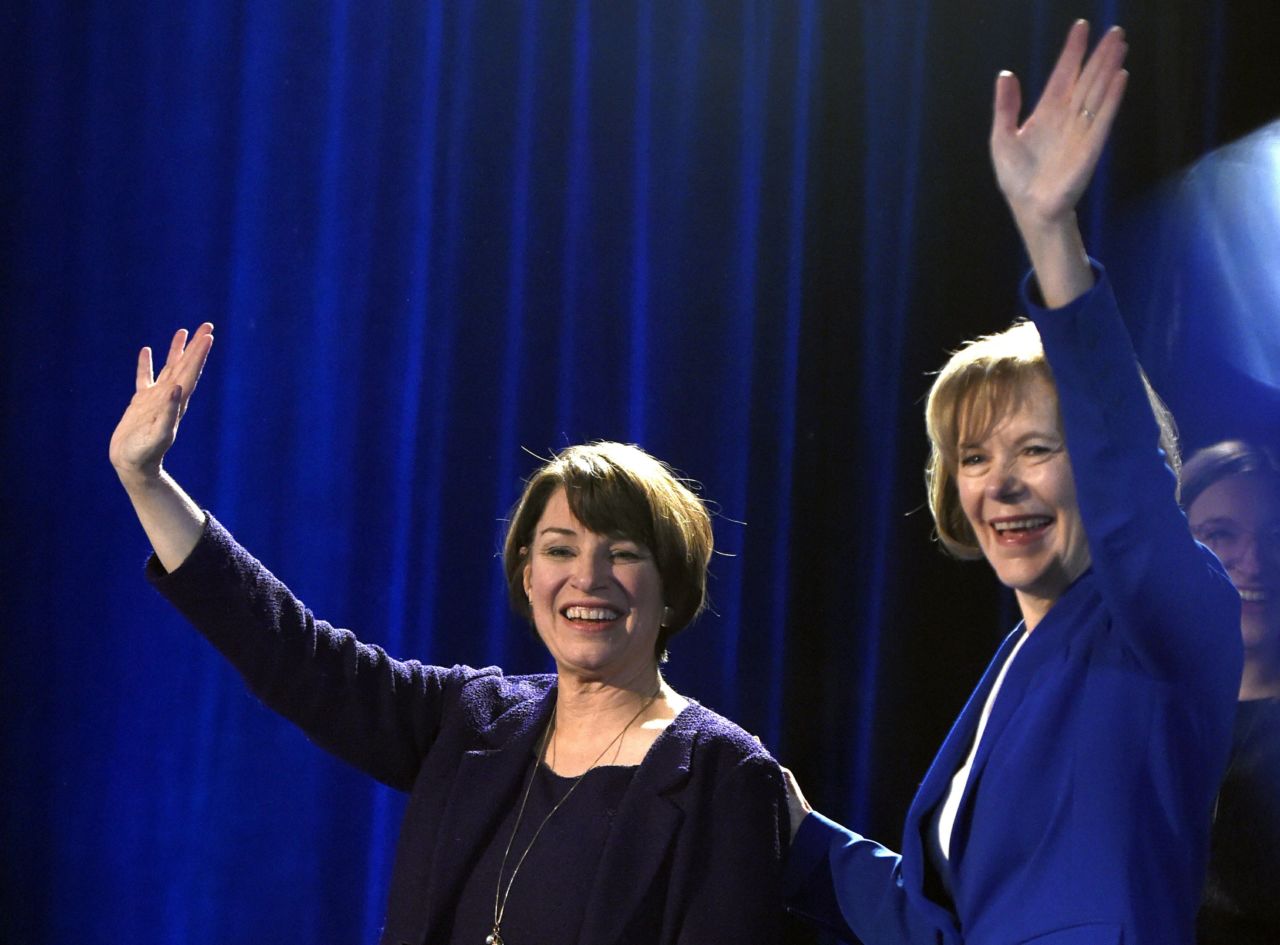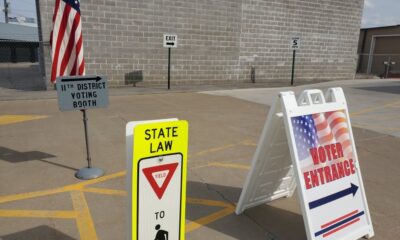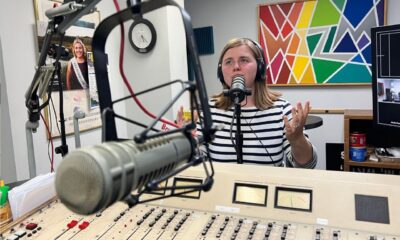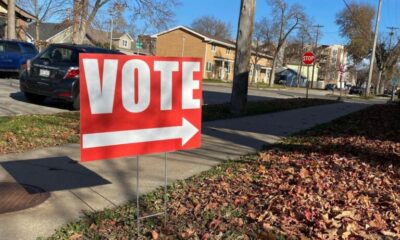Minnesota
Women, minorities help Democrats win Senate, governor races in Minnesota

Women and minority voters helped propel Democrats to victory in Minnesota’s top races. Health care was the top issue cited by voters in the midterm election and most believe the country is headed in the wrong direction, according to a wide-ranging survey of the American electorate.
As voters cast ballots for governor, U.S. Senate and members of Congress in Tuesday’s elections, AP VoteCast found that 6 in 10 Minnesota voters said the country is headed in the wrong direction, while almost 4 in 10 said it was on the right track.
Here’s a snapshot of who voted and why in Minnesota, based on preliminary results from AP VoteCast, an innovative nationwide survey of about 139,000 voters and nonvoters — including 4,238 voters and 675 nonvoters in the state of Minnesota — conducted for The Associated Press by NORC at the University of Chicago.
___
TWO SENATE SEATS
Democrats retained both Minnesota Senate seats with strong support from women, minorities and moderate voters.
Sen. Tina Smith kept her seat in the special election for the Senate seat vacated by Al Franken, who resigned in January amid a sexual misconduct scandal.
Smith led Republican state Sen. Karin Housley among voters under 45, while older voters were divided. Voters with a college education were more likely to favor Smith while those without a college degree were divided.
Smith was appointed to the vacancy by outgoing Democratic Gov. Mark Dayton; she was Dayton’s lieutenant governor and former top aide.
Democratic Sen. Amy Klobuchar also easily won a third term, defeating Republican state Rep. Jim Newberger. Klobuchar also drew support from voters with and without a college education.
___
RACE FOR GOVERNOR
Democratic Rep. Tim Walz defeated Republican Jeff Johnson in the race for Minnesota governor with strong support from women, urban voters and those under 45, keeping the state’s top job in Democratic hands after Gov. Mark Dayton chose not to run for a third term.
David Galle 49, a Minneapolis attorney, said he voted for Walz because, “I think he’s just a real solid Minnesotan. One thing that makes Minnesota great is a strong education system, and he’s dedicated to that.”
Teacher Dennis Draughn said allowing vouchers to help parents send their children to private schools, which Johnson supports, would cause divisions and aggravate segregation.
“I don’t really like the idea of privatizing education,” said Draughn, 33, of Minneapolis.
___
TOP ISSUE: HEALTH CARE
Health care was at the forefront of voters’ minds: More than one-third of Minnesota voters named it as the most important issue facing the nation in this year’s midterm elections, followed by immigration, cited by about 2 in 10 voters. Others said the economy, the environment and gun policy were top issues.
Sarah Roth, 22, of Minnetonka, Minnesota, said she voted for all Democrats because health care was so important.
“I think that having health care is a universal right that everybody in this country should have,” said Roth, who works at an autism day treatment center for young children. “People are dying from not having health care.”
___
STATE OF THE ECONOMY
Phillip Baum, 63, of Minnetonka, said the economy is treating him well: He’s a general contractor who has 30 employees and “I don’t ever want to live through another one of the Great Recessions.”
He’s like the majority of Minnesota voters, who have a positive view of the nation’s current economic outlook: 7 in 10 said the nation’s economy is good, compared with 3 in 10 who said it’s not.
Even so, the grandfather of four — a moderate conservative — said tariffs are starting to affect him.
“I’m concerned if they hold long-term, it will affect the economy, because I buy a lot of steel,” Baum said.
___
TRUMP FACTOR AND CONTROL OF CONGRESS
President Donald Trump affected the majority of voters in the midterm election, with more than 6 in 10 saying he was a factor in how they voted while more than one-third said he wasn’t. Two in 10 voters said a reason for their vote was to express support for Trump, and 4 in 10 said it was to oppose Trump.
A majority of voters in Minnesota had negative views of Trump: 6 in 10 said they disapprove of how he is handling his job as president, while 4 in 10 said they approve of Trump.
Kathleen Lorence, a 60-year-old self-described “dyed in the wool Republican,” said she still supported President Donald Trump two years after voting for him — even if he “shoots himself in the foot” at times. She hoped voting for Republicans would give Trump reinforcements in Congress.
“I want to see what he’s going to do for the next couple years,” she said.
Tuesday’s elections will determine control of Congress in the final two years of Trump’s term in office, and two-thirds of Minnesota voters said which party will hold control was very important as they considered their vote. More than 2 in 10 said it was somewhat important.
“I think the past couple of years, ever since President Trump has been in office, it has just been not the country that I am used to or that I thought I would be in,” Roth said. “This … was my opportunity to help this country in changing who is making the decisions.”
___
STAYING AT HOME
In Minnesota, 7 in 10 registered voters who chose not to vote in the midterm election were younger than 45. A wide share of those who did not vote — almost 8 in 10 — did not have a college degree. One-fourth of nonvoters were Democrats and a third were Republicans.
___
AP VoteCast is a survey of the American electorate in all 50 states conducted by NORC at the University of Chicago for The Associated Press and Fox News. The survey of 4,238 voters and 675 nonvoters in Minnesota was conducted Oct. 29 to Nov. 6, concluding as polls close on Election Day. It combines interviews in English or Spanish with a random sample of registered voters drawn from state voter files and self-identified registered voters selected from opt-in online panels. Participants in the probability-based portion of the survey were contacted by phone and mail, and had the opportunity to take the survey by phone or online. The margin of sampling error for voters is estimated to be plus or minus 2.0 percentage points. All surveys are subject to multiple sources of error, including from sampling, question wording and order, and nonresponse. Find more details about AP VoteCast’s methodology at http://www.ap.org/votecast







